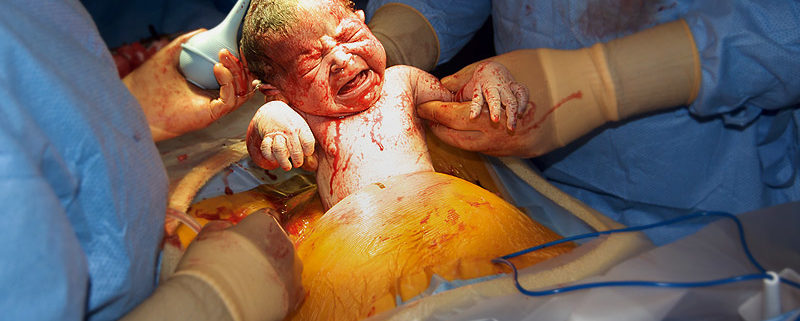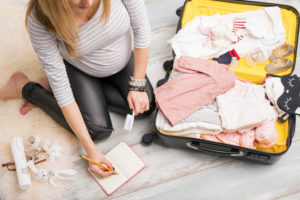Preventing Pregnancy Stretch Marks: Essential Tips and Strategies
Pregnancy is a miraculous time, but it can also bring about significant changes to your body, one of which is stretch marks. These marks are a common concern for many expectant mothers. While completely preventing stretch marks might not be possible for everyone due to genetic and other physiological factors, there are proactive steps you can take to minimize their appearance. This article delves into effective strategies for preventing pregnancy stretch marks, helping you maintain skin health and confidence throughout your pregnancy.
What Causes Stretch Marks During Pregnancy?
Stretch marks, or striae gravidarum, typically appear as bands of parallel lines on your skin. These lines are a different color and texture than your normal skin, and they range from purple to bright pink to light gray. When you touch stretch marks, you might feel a slight ridge or indentation on your skin. They occur when the skin is suddenly stretched and are extremely common in the later stages of pregnancy.
Key Strategies for Prevention
1. Maintain a Healthy Diet
Eating a diet rich in vitamins and minerals helps support skin health. Ensure you’re getting enough vitamins C, D, and E, and zinc and protein. These nutrients are crucial for skin elasticity and overall health. Include plenty of fruits, vegetables, whole grains, and lean proteins in your diet to aid in maintaining skin elasticity.
2. Stay Hydrated
Keeping your skin hydrated decreases the likelihood of stretch marks. The more hydrated your skin, the less likely it is to tear when stretched. Drinking water is the best way to keep your body hydrated; aim for at least 8-10 glasses a day.
3. Control Weight Gain
A steady and controlled weight gain throughout pregnancy helps manage skin stretching. Gaining weight at a recommended pace decreases the stress on the skin. Consult with your healthcare provider to understand the appropriate amount of weight you should be gaining based on your body type.
4. Use Stretch Mark Creams and Oils
Regularly applying creams and oils specially formulated for pregnancy can help maintain skin elasticity and moisture. Products containing cocoa butter, vitamin E, and hyaluronic acid are popular choices. Begin application early in pregnancy and continue until after you have given birth for best results.
5. Stay Active
Regular exercise helps maintain a healthy weight and increases blood flow, which is beneficial for skin health. Activities like walking, swimming, and prenatal yoga are great options.
When to Consult a Dermatologist
If you’re concerned about stretch marks or if they cover large areas of your body, consulting with a dermatologist can provide additional treatment options, such as topical treatments or laser therapy.
Conclusion
While stretch marks can be a common part of pregnancy, adopting these preventive measures can help reduce their severity and give you confidence in your changing body. Remember, the appearance of stretch marks can vary widely from person to person, and having them is perfectly normal and natural.
Disclaimer
“The information, including but not limited to, text, graphics, images and other material contained on this website are for informational purposes only. The purpose of this website is to promote broad consumer understanding and knowledge of various health topics. It is not intended to be a substitute for professional medical advice, diagnosis or treatment. Always seek the advice of your physician or another qualified healthcare provider with any questions you may have regarding a medical condition or treatment and before undertaking a new health care regimen, and never disregard professional medical advice or delay in seeking it because of something you have read on this website.”
External References
Postpartum Hair Loss
Causes
While breastfeeding is often blamed for hair loss, there is no evidence to show that breastfeeding causes or increases hair loss in the postpartum period. Unfortunately, this is a symptom that almost all moms will experience. While this condition can become extreme (called Postpartum Alopecia) some hair loss is normal and a natural part of postpartum. Most moms will experience this symptom somewhere around three months postpartum. It can last a few weeks or a few months, depending on how long your hair cycles last. Often moms forget that they are still considered postpartum by this point and don’t think to relate childbirth to this symptom. Blame it on hormones. During pregnancy, estrogen increases, which typically encourages hair growth and improves texture. But in the postpartum period, estrogen levels drop. Plus, you may have vitamin deficiencies lingering from pregnancy. All these factors along with the exhaustion that accompanies being a new parent can lead to hair loss. The other reason is that when you are pregnant your hair goes into a dormant cycle and you lose less hair. This is called the telogen phase. Eventually, your hair will go into the next phase (telogen effluvium) and fall out. Therefore, when you have the baby you start losing all of the hair that you didn’t lose when you were pregnant. The hair loss and regrowth will probably be most apparent in the area above your forehead. If you gained a lot of extra hair when you were pregnant, this can look quite dramatic.How to Handle Postpartum Shedding
It’s normal for your hair to thin out after pregnancy. If it’s not worrying you, you don’t need to do anything to treat it. And, unfortunately, there is nothing that has been shown to prevent or slow postpartum hair loss. But if your hair loss is bothering you, there are treatments you can try to make your hair appear fuller and healthier.- Skip the styling
- Consider a haircut
- Eat right
- Switch up your product routine
- Take your vitamins
When to Talk to Your Practitioner
Usually, by the time your hair begins to thin, you have already had your postpartum checkup with your doctor or midwife. If your shedding becomes extreme or you are losing large patches of hair, call your practitioner and mention it. Occasionally hair loss is the sign of other postpartum issues, like hypothyroidism. You want to be sure to rule those out. If you are still losing hair around your baby’s first birthday, call your practitioner. Typical hair loss does not usually continue that long into the postpartum period.Disclaimer
The information, including but not limited to, text, graphics, images and other material contained on this website are for informational purposes only. The purpose of this website is to promote broad consumer understanding and knowledge of various health topics. It is not intended to be a substitute for professional medical advice, diagnosis or treatment. Always seek the advice of your physician or another qualified healthcare provider with any questions you may have regarding a medical condition or treatment and before undertaking a new health care regimen, and never disregard professional medical advice or delay in seeking it because of something you have read on this website.Things Every Partner Should Do for a Mom-To-Be
It’s fair to say that women do most of the work when it comes to pregnancy. After all, your baby has set up camp in your partner’s uterus, so she is the one who will be peeing every twenty minutes, struggling to get comfy at night, and giving birth. Your lack of uterus puts you on the bench, but you can still be a team player when it comes to pregnancy. You are charged with the vital role of providing support, being a shoulder to cry on and, of course, getting the snacks.
“Your partner may be doing the heavy lifting (or carrying) for the next nine months, but she’ll need a lot of support from her partner, too.”
While pregnancy and giving birth is Mom’s job, there are a number of ways that you, as her partner, can share the load, too. And guess what? It’s a lot more fun that way. After all, it took two to start this journey!
Here are some roles for dads these days during pregnancy: 
- Take over some of the household chores.
As your partner’s bodies adapt to the rigors of pregnancy, some of the household chores get impossible for them. The fumes of cleaning solutions can be nauseating if not toxic, so cleaning toilets and tubs may need to fall to dad. Vacuuming and mopping can be really hard when mom’s body is already tired or the baby bump gets in the way. Offering to take this off our pregnant partner (especially before she has to ask) can help alleviate a lot of stress and anxiety.
- Prioritize Her
The relationship a pregnant woman has with her partner is very important. A large study in Scandinavia recently identified that the single biggest factor in antenatal anxiety was a woman’s relationship with her partner, and there’s also a big link between mood disorders antenatally and postnatally. Life can get busy sometimes. There are only so many hours in each day, and yet so much to be packed in. There are work demands, social activities, family to see, and a relationship to nurture. It can be pretty exhausting, and you may at times wonder whether you are neglecting certain areas of your life. Make sure that you are prioritizing your relationship throughout the pregnancy. Make time for her, make the effort, and check in to find out how she’s doing.
- Create Some Memories
You will soon be a family of three, and though you will find that life becomes more wonderful and rich than ever before, it’s true to say that it will never be the same again. The lazy mornings in bed, the carefree nights out, and the impromptu weekends away will be scarce, at least for a few years. Now is the perfect time to create some special memories together. Take a trip away, spend a weekend lounging in bed, and head off into the countryside for walks. Do whatever you want, just make sure you do it together.
- Learn about the process with her
Many dads find themselves detaching from the pregnancy process, in part because they haven’t taken the time to learn about it. Go with your child’s mom to prenatal classes and doctor’s appointments. Read books or watch videos about the process of pregnancy. Learn about the labor and delivery process and talk with other fathers about their experiences. Getting more involved in becoming educated about the pregnancy process will help be a support to mom through her experience.
- Support her emotionally.
Hormones you didn’t know existed will begin to manifest themselves in strange ways during pregnancy. Your partner may cry a lot or have moments of total exhilaration. Things that used to be simple and routine now are laden with emotions, both positive and negative. Recognize that these are all natural and to be expected, and that, for the most part, they will not last beyond labor and delivery. Patience, understanding, active listening and just holding her when she wants to be held are big things that will sustain her emotional needs during her pregnancy.
- Listen and Talk
Pregnancy and childbirth can be a lot to handle especially for first-timers. So make sure your partner knows she can vent to you about all those little (and big!) changes going on now, nerves about an upcoming procedure, anxiety about what kind of mom she’ll be, annoyance at her puffy feet. Even if you think her concerns are outsized or illogical, keep the thought to yourself. Don’t tell her to “stop worrying” or “chill out.” Instead, listen to her, offer to help her find information, go to doctor appointments with her, or take an afternoon off to have some fun together. And since you’re a team, don’t hold back on sharing your fears, too. Remember, it’s totally normal if the ride doesn’t feel quite as carefree as usual: Speak up, and things will go a lot more smoothly for both of you.
- Be There at all times possible
Tell Her She’s Beautiful, Run Her A Bath, Give Massages, Be Understanding. Many women find it difficult to cope with the changes to their body during pregnancy. She may be worried about stretch marks, concerned about weight gain, or just be feeling not much like her old self. Tell her when she looks great, compliment her on her bump, and make sure she knows just how much you love her. It’s important that you reaffirm her. Sometimes, pregnancy sucks. Give her a break. Pregnancy has its fair share of ups and downs, but you can make it much easier by cutting her a little slack.
Long gone are the days when fathers-to-be are left waiting in the wings to hear the announcement of their child’s birth by doctors and nurses. Instead, more men than ever are playing an active role in the birth of their child. They are keen to learn all they can, in order to help their partner during labour.
Here are some roles for dads these days during Labour: 
- Before The Birth
Prior to your partner going into labour, it’s a good idea to discuss her birth preferences with her if you haven’t sat down and thought it through with her already. It’s important for you to know what she might like you to do for her in labour bearing in mind that her preferences may actually change when it actually happens! A massage, while she is in labour, might sound wonderful now, however during labour, she might not want to be touched at all. So it’s useful to keep this in mind. When your partner is in labour, you can reaffirm her requests with her then.
- Share the Coaching
Labor can be a long, hard haul for both of you. You may want to have a friend or family member there to assist. This person can help with coaching and stay with your partner when you need to eat or take breaks. An extra person can provide emotional and physical support for both of you.
- Cheer From the Sidelines
Many couples choose this option. You’re there to hold your partner’s hand and rub her back. You may snap pictures or take videos of your baby’s birth. You may even cut the umbilical cord. But you’re happy to let others do the hands-on work. Jeffrey Kuller, MD, professor of obstetrics and gynecology at Duke University Medical Center, says that providing support is actually the most important thing dads can bring to the labor and delivery. “Dads don’t really need to be the coach,” Kuller says. “That’s what we’re supposed to do.”
- Wait Outside
In some cases, a woman doesn’t want her baby’s father there. If you haven’t been involved in the pregnancy or are estranged from her, there’s a good chance she won’t. Whatever the reason, if your presence in the room makes it stressful for her, it can make labor and delivery more difficult. Then it’s better for you to be elsewhere.
For most dads, though, being with their partner is a good choice. In one study of how new fathers viewed the experience, 81% said it was rewarding and enjoyable. Regardless of how involved you choose to be, witnessing that final push that sends your child into the world can be an experience like no other.
- Look After Her
After birth, your partner will need time to recover. She will be exhausted, sore and hormonal, and will be relying on you for support. Help with the baby, and do as many nappy changes as you can. If she’s breastfeeding, make sure that she feels supported, and seek help for her if she is struggling. Cook meals, help your partner get some sleep, and make sure she knows just how much you love her.
Pregnancy is challenging at best, but it brings with it a sense of awe and wonder if you work hard at making it a process where you can feel those things. Being supportive physically and emotionally, learning all you can about the process, covering the needed bases and focusing on preparation will help keep your relationship strong and help you have a sweeter experience together as you anticipate expanding your family circle.
The information, including but not limited to, text, graphics, images and other material contained on this website are for informational purposes only. The purpose of this website is to promote broad consumer understanding and knowledge of various health topics. It is not intended to be a substitute for professional medical advice, diagnosis or treatment. Always seek the advice of your physician or another qualified healthcare provider with any questions you may have regarding a medical condition or treatment and before undertaking a new health care regimen, and never disregard professional medical advice or delay in seeking it because of something you have read on this website.
Dental Care and Pregnancy
It’s important for you to take good care of your teeth and gums while pregnant. Pregnancy causes hormonal changes that increase the risk of developing gum disease which, in turn, can affect the health of your developing baby.
Pregnancy and dental work questions are common for expecting moms. Preventive dental cleanings and annual exams during pregnancy are not only safe but are recommended. The rise in hormone levels during pregnancy causes the gums to swell, bleed, and trap food causing increased irritation to your gums.
Does regular dental work during pregnancy safe?
Dental work while pregnant, such as cavity fillings and crowns, should be treated to reduce the chance of infection. If dental work is done during pregnancy, the second trimester is ideal. Once you reach the third trimester, it may be very difficult to lie on your back for an extended period of time.
The safest course of action is to postpone all unnecessary dental work until after the birth.
However, sometimes emergency dental work, such as a root canal or tooth extraction, is necessary. Elective treatments, such as teeth whitening and other cosmetic procedures, should be postponed until after the birth. It is best to avoid this dental work while pregnant and avoid exposing the developing baby to any risks, even if they are minimal.
Dental problems that commonly arise during pregnancy include:
- Gingivitis. Thanks to hormonal changes that exaggerate your body’s response to bacteria in your mouth, pregnant women are more likely to develop this mild form of gum disease, which can cause irritation, redness, swelling, bad breath and possible bleeding.
- Cavities. Between the need to up your caloric intake and those intense food cravings, you’re probably doing more snacking these days—which can lead to cavities. If you’re suffering from nausea and vomiting, the increased acidity in your mouth can also lead to tooth decay.
- Gum tumors. If you develop round, red lumps along your gum line, you can chalk them up to hormonal changes and possibly a buildup of plaque. These pregnancy tumors, as they’re known, are rare, but tend to develop during your second trimester and are completely benign, usually fading away after the baby is born.
- Enamel erosion. If your morning sickness is causing you to vomit frequently, the acids can begin to erode your tooth enamel, increasing your risk of tooth decay.
Dental Care While Pregnant
- Tell your dentist (and doctor) if you are pregnant. Routine dental care can be done at any time during pregnancy. Any urgent procedure can be done, as well. All elective dental procedures, however, should be postponed until after the delivery. Before you have your dental appointment, check with your obstetrician to see if she has any special precautions/instructions for you.
- Tell your dentist the names and dosages of all drugs you are taking – including medications and prenatal vitamins prescribed by your doctor – as well as any specific medical advice your doctor has given you. Your dentist may need to alter your dental treatment plan based on this information.
- Dental X-rays can be done during pregnancy. Your dentist will use extreme caution to safeguard you and your babies, such as shielding your abdomen and thyroid. Advances in technology have made X-rays much safer today than in past decades.
- Don’t skip your dental checkup appointment simply because you are pregnant. Now more than any other time, regular periodontal (gum) exams are very important because pregnancy causes hormonal changes that put you at increased risk for periodontal disease and for tender gums that bleed easily – a condition called pregnancy gingivitis. Pay particular attention to any changes in your gums during pregnancy. If tenderness, bleeding or gum swelling occurs at any time during your pregnancy, talk with your dentist or periodontist as soon as possible.
- Follow good oral hygiene practices to prevent and/or reduce oral health problems.
After You’ve Had Your Baby
If you experienced any gum problems during your pregnancy, see your dentist soon after delivery to have your entire mouth examined and periodontal health evaluated.
The information, including but not limited to, text, graphics, images and other material contained on this website are for informational purposes only. The purpose of this website is to promote broad consumer understanding and knowledge of various health topics. It is not intended to be a substitute for professional medical advice, diagnosis or treatment. Always seek the advice of your physician or another qualified healthcare provider with any questions you may have regarding a medical condition or treatment and before undertaking a new health care regimen, and never disregard professional medical advice or delay in seeking it because of something you have read on this website.
Resources:
http://americanpregnancy.org/pregnancy-health/dental-work-and-pregnancy/
THE IMPORTANCE OF READING WHILE PREGNANT
Many studies show that reading (particularly from the mother’s relaxing voice) causes a baby’s fetal heart rate to drop. Also, the bond that is experienced between parent and child, later on, can start to occur while Mama or Papa read to the baby prenatally. Participation in reading is also a great way for other family members to connect with the baby.
Reading is one of the most vital talents a child needs in order to be successful in life. Books are one’s best friend and the early we inculcate this habit, it is excellent for the child. Reading while pregnancy not only increases the knowledge but also helps in making the bond between the mother and the baby stronger. It also triggers better concentration, a good attention span, distressing the mother of her tensions, resulting in a smarter baby.
How Does Reading During Pregnancy Increase Baby’s Intelligence?
A baby’s nerve pathways in the ears and neural system in the brain start developing as early as the twenty-sixth week, which is when the baby will begin responding to sounds and voices regularly. Introducing music and words while your baby is still growing inside of you may increase your baby’s intelligence; many expectant parents can start talking to their babies in the womb, reading to them and playing soothing music to generate a response from their developing brains. Reading provides auditory stimulation for babies’ growing brains and can acclimate children to the sounds of their parents’ voices.
Why is it important to read to your baby?
As stated earlier reading comes with its own pack of benefits for a baby when stories, rhymes, and lullabies are read to her. However, a few points can be taken to notice which help in illustrating the importance of reading to a baby. Given below are few of them:
- Reading to a baby helps in grasping the rare words thus increasing vocabulary.
- Reading helps foster good attention span and also in memorizing.
- Babies can easily understand the meanings of the word.
- With reading, the closeness between the mother and the baby increases.
- Babies already get used to reading and this love helps them with their learnings in the future.
- Reading at an early age helps in brain development and speech improvement.
- When rhymes and stories are read to a baby in a repetitive manner, it makes the process interactive and full of fun, making it easy for the baby to remember.
When should I start reading to my baby in the womb?
About six months along, a baby is already quite familiar with the sounds of the womb, from the mother’s heartbeat to digestive sounds. From outside the womb, sounds are extremely clear, although about 10 decibels lower. From week 25 forward, a baby’s primary connection and information to the outside world come in the form of sound. By this point, the soothing, rhythmic sounds of a simple story should be quite audible, although the tones and cadences of the voice are more important than enunciation of the actual words.
Benefits of Reading to a Baby in the Womb?
As per researches, reading to your unborn is loaded with benefits for the mother-child duo. Some of the benefits are discussed as under:
- Reduction of Maternal Stress and Anxiety- Reading to the baby helps in reducing prenatal stress and worries. A study shows that when a mother reads to a baby in the womb, the heart rate of the baby seems to drop and she calms down and shows less movement stating she is enjoying the read.
- Improves Bonding Behaviour –The bond between mother and the baby becomes stronger by reading to the unborn baby as the baby starts getting familiar with the mother’s voice and can identify soft and loud tones of music. She feels more relaxed when soft music is played as it helps in resting due to its comforting quality just like a lullaby, whereas if the baby is sleepy and loud music is played, it in turns kicks as it dislikes it. Even the father by just participating in a reading activity, singing or talking to the baby will help in making the bond stronger.
- Enhanced Concentration and Attention Span- Once the mother starts reading to the baby, they pick up the melody of the song, even though the words do not mean anything to them but they start identifying the voice of the mother. The child also tends to listen to it for a longer time resulting in increased attention span and concentration levels. Repetitive words also get stored in the memory of the unborn and this helps them further when they start their schooling.
Best Types of Books to Read During Pregnancy
Even though your baby can’t understand the real meaning behind the words he hears, he can pick up the rhythm and tone of the sentences and will respond to how the mother responds to whatever she reads. Reading thrillers or horror stories can raise stress levels in the pregnant mother, which can trigger an anxiety response in the baby. Selecting soothing, lighthearted and fun reading material is the best way to entertain your baby during pregnancy, and children’s books are a good resource for short stories that may benefit both the mother and the infant. Since babies typically have short attention spans, dividing reading sessions into small segments hold their attention long enough to derive the full benefit from this experience.
Thus, it can be seen that with an early start of reading to the baby far-reaching results are achieved. So it is best to kick start early for making the mother-baby bond stronger and helping the mother destress from maternal worries and stress. Finally to let the mother enjoy gradually along with the baby, relax, be calm and enjoy the enjoyable moments of parenting leading to strong and firm relationships and a happy, secure and comfortable future that beckons.
The information, including but not limited to, text, graphics, images and other material contained on this website are for informational purposes only. The purpose of this website is to promote broad consumer understanding and knowledge of various health topics. It is not intended to be a substitute for professional medical advice, diagnosis or treatment. Always seek the advice of your physician or another qualified healthcare provider with any questions you may have regarding a medical condition or treatment and before undertaking a new health care regimen, and never disregard professional medical advice or delay in seeking it because of something you have read on this website.
Resources:
https://www.beingtheparent.com/does-reading-books-during-pregnancy-make-the-child-smart/
https://www.modernmom.com/617de90a-48c3-11e3-87f1-bc764e04a41e.html
How to Prepare For a Cesarean Section
A Cesarean section, or C-section, is a procedure during which a baby is surgically delivered. This procedure is carried out when a vaginal birth isn’t possible when vaginal birth will put the mother’s or baby’s life at risk, A C-section is a form of surgery during which a doctor cuts through your belly and uterus to enable your baby to be born. In some circumstances, a c-section is scheduled in advance. In others, the surgery is needed due to an unforeseen complication. If you or your baby is in imminent danger, you’ll have an emergency c-section. Otherwise, it’s called an unplanned section.
The Preparation
 If you are planning for a scheduled C-section or want to prepare yourself in the event an emergency C-section is necessary, you should be aware of the details of the procedure, get the necessary testing done, and create a hospital plan with your doctor. In most cases, a scheduled C-section will be done under a local anesthetic, so you will be awake during the operation. An epidural is administered in the spine to numb any feeling.
If you are planning for a scheduled C-section or want to prepare yourself in the event an emergency C-section is necessary, you should be aware of the details of the procedure, get the necessary testing done, and create a hospital plan with your doctor. In most cases, a scheduled C-section will be done under a local anesthetic, so you will be awake during the operation. An epidural is administered in the spine to numb any feeling.
Why would I have an emergency c-section?
You may need to have an emergency c-section if problems arise that make continuing labor dangerous to you or your baby. These include the following:
- Your baby’s heart rate gives your practitioner cause for concern, and she decides that your baby can’t withstand continued labor or induction.
- The umbilical cord slips through your cervix (a prolapsed cord). If that happens, your baby needs to be delivered immediately because a prolapsed cord can cut off his oxygen supply.
- Your placenta starts to separate from your uterine wall (placental abruption), which means your baby won’t get enough oxygen unless he’s delivered right away.
- You’re attempting vaginal birth after cesarean (VBAC) and there’s concern about a uterine rupture at the site of your previous c-section incision.
Why would I have a scheduled c-section?
In some cases, your doctor will recommend a c-section instead of a vaginal delivery. For example, you may require a planned c-section if:
- You’ve had a previous cesarean with a “classical” vertical uterine incision (this is relatively rare) or more than one previous c-section. Both of these significantly increase the risk that your uterus will rupture during a vaginal delivery.
- NOTE: If you’ve had only one previous c-section, with a horizontal uterine incision, you may be a good candidate for vaginal birth after cesarean or VBAC. (Note that the type of scar on your belly may not match the one on your uterus.) Or you may choose to have an elective c-section.
- You’ve had some other kind of invasive uterine surgery, such as a myomectomy (the surgical removal of fibroids), which increases the risk that your uterus will rupture during a vaginal delivery.
- You’re carrying more than one baby. (You might be able to deliver twins vaginally, or you may need a cesarean, depending on factors like how far along in the pregnancy you are when delivering and the positions of the twins.) The more babies you are carrying the more likely it is you’ll need a c-section.
- Your baby is expected to be very large (a condition known as macrosomia). Your doctor is particularly likely to recommend a c-section in this case if you’re diabetic or you had a previous baby who suffered serious trauma during vaginal birth.
- Your baby is in a breech or transverse position. (In some cases, such as a twin pregnancy in which the first baby is head down but the second baby is breech, the breech baby may be delivered vaginally.)
- You’re near full-term and have placenta previa (when the placenta is so low in the uterus that it covers the cervix).
- You have an obstruction, such as a large fibroid, that would make vaginal delivery difficult or impossible.
- The baby has a known malformation or abnormality that would make a vaginal birth risky, such as some cases of open neural tube defects.
- You’re HIV-positive, and blood tests done near the end of pregnancy show that you have a high viral load.
Should you be worried about a scheduled C-section?
Doctors will only advise a Caesarean section as a way to minimize the risks to you or your baby, which could arise from natural birth. A C-section is usually a more quick and controlled way of your baby being born.
If you are advised to have a scheduled C-section, it is likely because your doctor sees it as the safest way for your little one to be born. However, as with all major surgeries, it does carry some risks. You are more prone to bleeding and you can experience the side effects of an epidural, which your doctor will discuss with you.
If you have already made a birth plan before the decision to have a C-section was made, then it is still a good idea to take it with you to the hospital. Surgery can be a very scary thing but knowledge is power. If you know what is going to happen, you’ll feel much more confident about it.
What to pack for a scheduled C-section
Take note that you’ll be staying in the hospital a little longer after a scheduled C-section — most likely 2-3 days — and baby will be staying with you.
You’ll want to bring comfortable clothing and slippers. Go for items that are easy to maneuver if you are breastfeeding.
Also, remember that you won’t be able to get out of bed for the first 8-12 hours after surgery, while the epidural wears off. So make sure that the clothes you’ll bring are easy to put on and take off, for easier changing when needed.
Don’t worry too much about what to bring though, as you can always ask your partner or family members to bring anything you forget!
What are the risks of having a c-section?
A c-section is major abdominal surgery, so it’s riskier than a vaginal delivery. Moms who have c-sections are more likely to have an infection, excessive bleeding, blood clots, more postpartum pain, a longer hospital stay, and a significantly longer recovery. Injuries to the bladder or bowel, although very rare, are also more common. It’s also possible that you’ll have a reaction to the medications or to the anesthesia.
Studies have found that babies born by elective c-section before 39 weeks are more likely to have breathing problems than babies who are delivered vaginally or by emergency c-section.
Not all c-sections can – or should – be prevented. In some situations, a c-section is necessary for the well-being of the mother, the baby, or both. Ask your practitioner exactly why he is recommending a c-section. Talk about the possible risks and advantages for you and your baby in your particular situation.
If you’re due to give birth to your little one by a scheduled C-section, don’t panic. Relax and think positive thoughts — you and your baby can do it!
The information, including but not limited to, text, graphics, images and other material contained on this website are for informational purposes only. The purpose of this website is to promote broad consumer understanding and knowledge of various health topics. It is not intended to be a substitute for professional medical advice, diagnosis or treatment. Always seek the advice of your physician or another qualified healthcare provider with any questions you may have regarding a medical condition or treatment and before undertaking a new health care regimen, and never disregard professional medical advice or delay in seeking it because of something you have read on this website.
Resources:
https://www.wikihow.com/Prepare-for-a-Cesarean-Section
https://sg.theasianparent.com/how-to-plan-for-a-scheduled-c-section/







